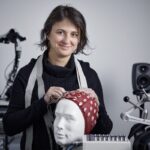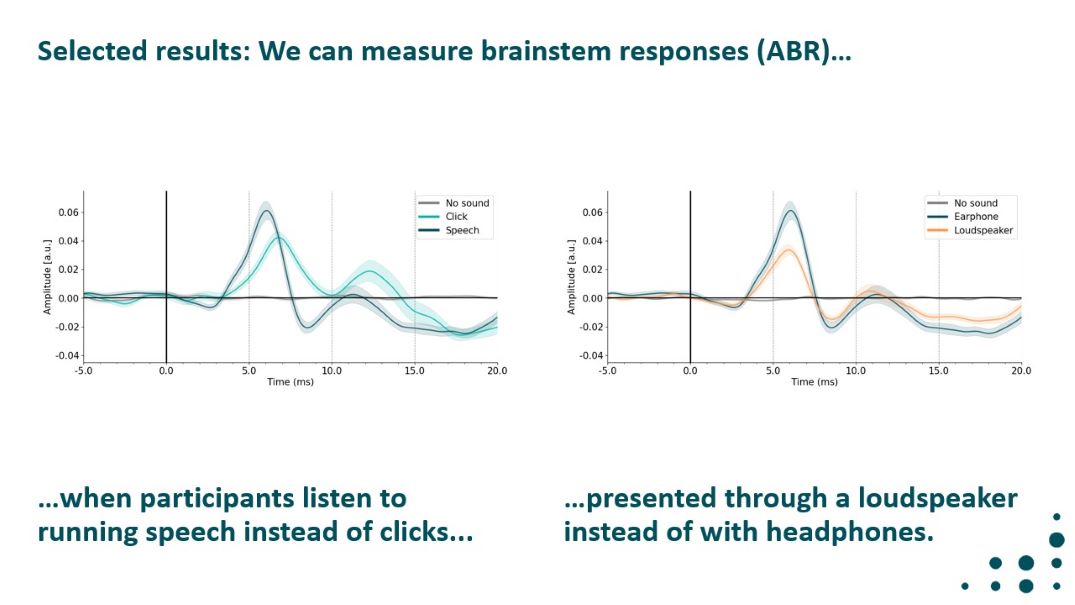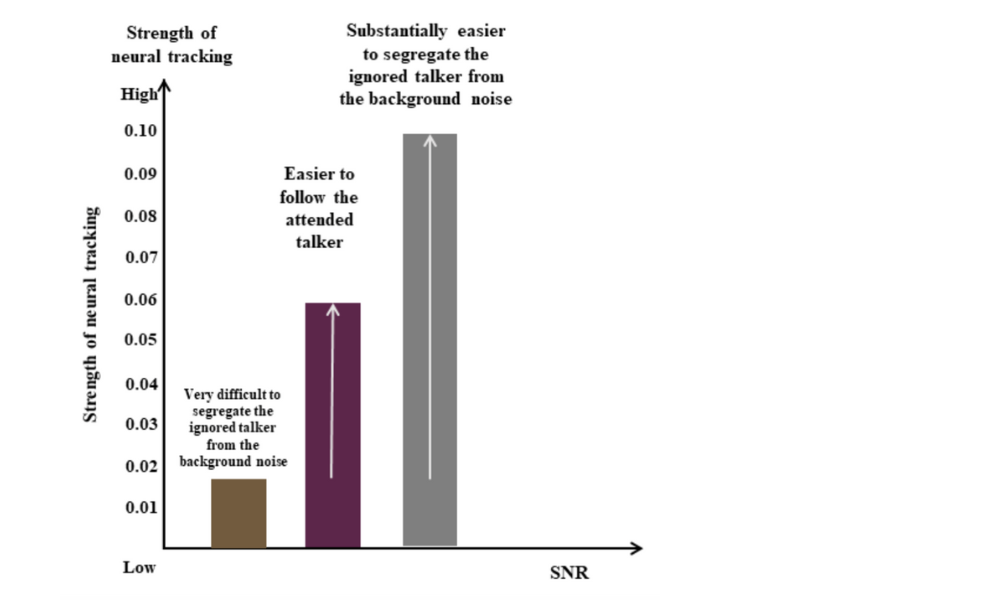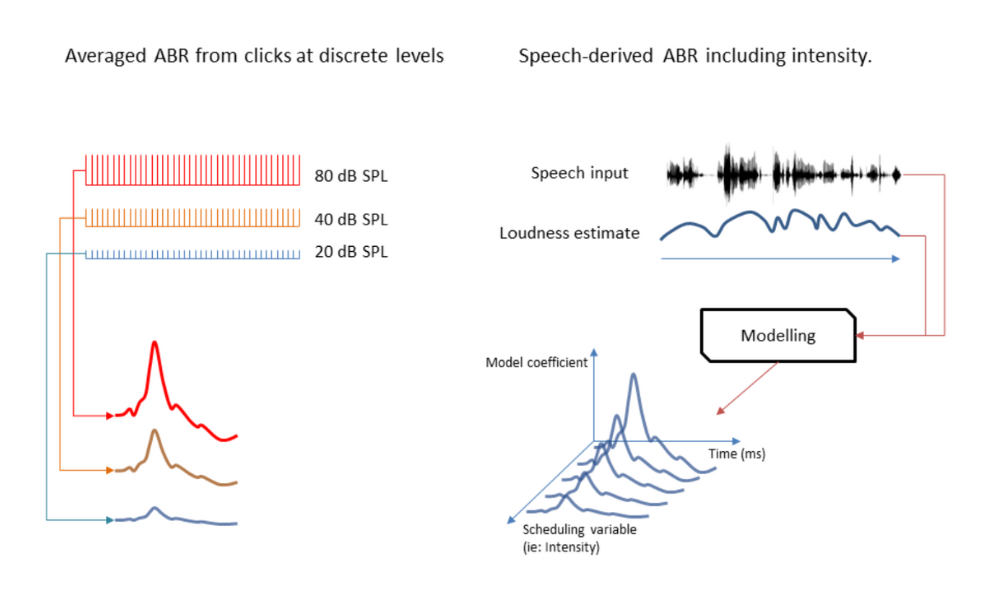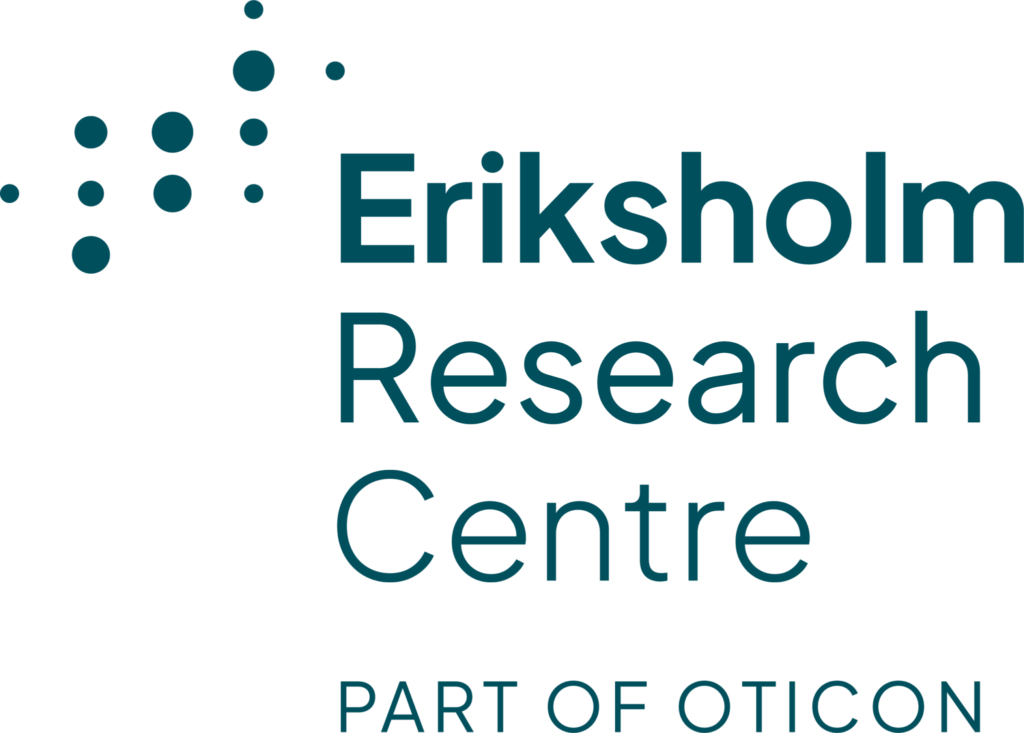Introduction
Auditory brainstem responses are small electrical signals generated in the ‘reptilian’ early part of the brain in response to sounds. Clinicians use these signals to objectively determine whether sounds are being transmitted from the ear to the brain. This can help with fitting hearing aids and assessing auditory system health. However, the sounds used are repetitive, artificial, and because they do not sound like speech, do not pass well through a hearing aid. In this project we are advancing towards using natural speech sounds as stimuli and improving the methods used to generate these responses, so that they can be used in an audiological context.
Aims
Methodology
Results
We have already shown that brainstem responses can be generated to natural speech in listeners with normal hearing. We have done this with the speech presented directly to the ear with insert-phones, where we have maximum control over the stimulus used, as well as when the speech is delivered via a loudspeaker in a normal room. We are now looking at data from hearing aid users – in one condition using insert-phones, and in another condition when the listeners are listening via their own hearing aids to speech from a loudspeaker.



